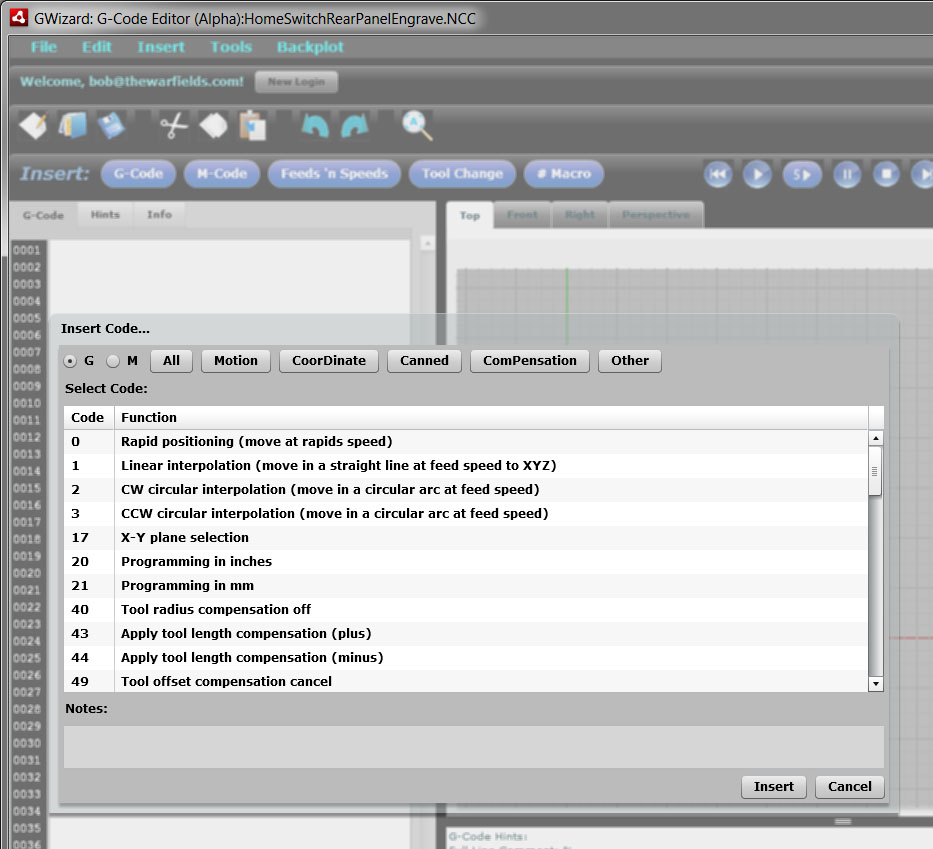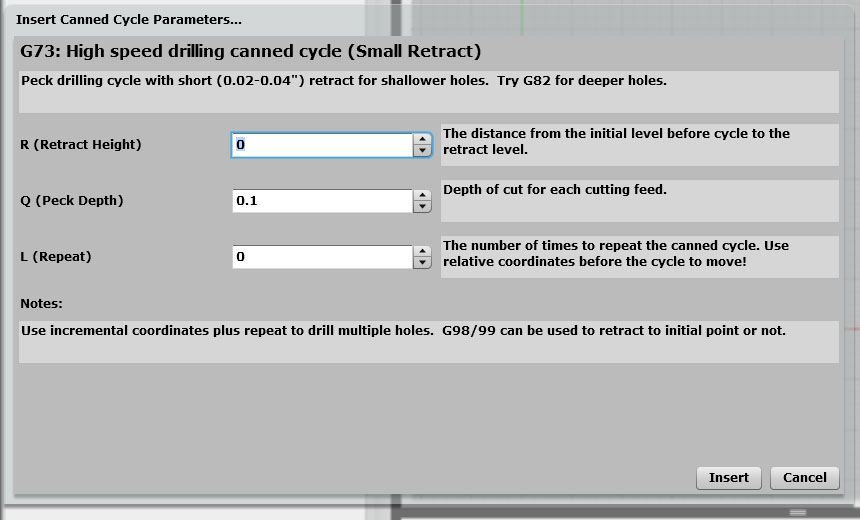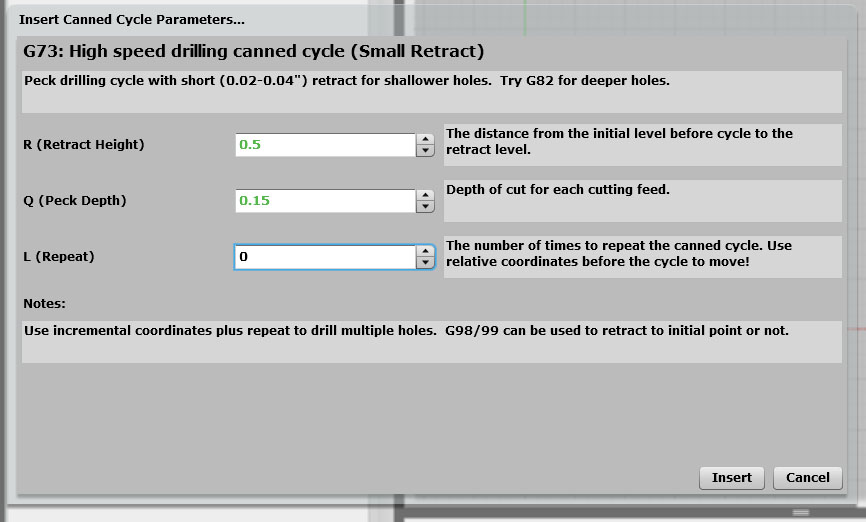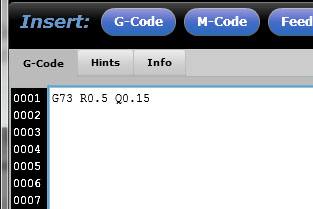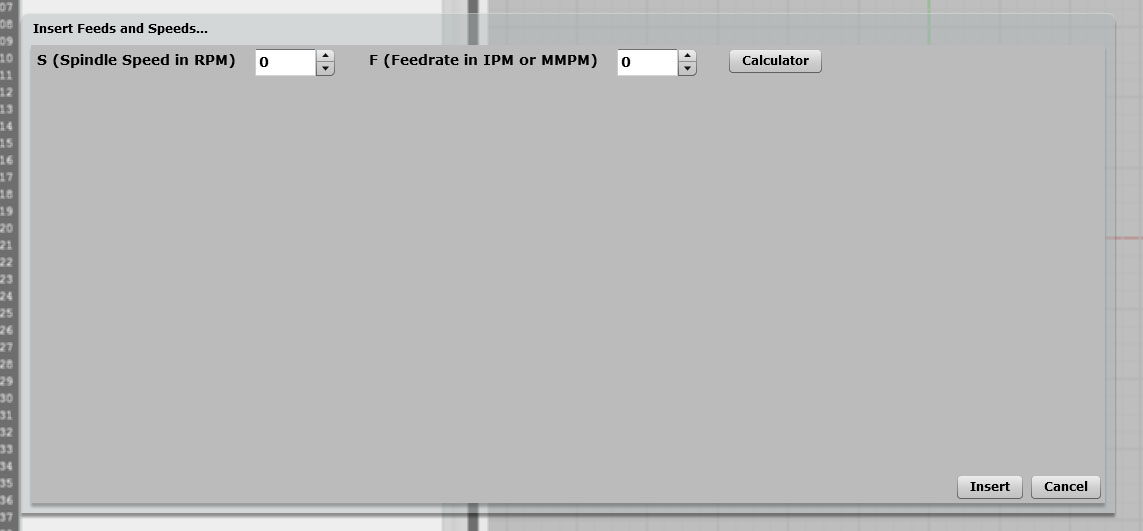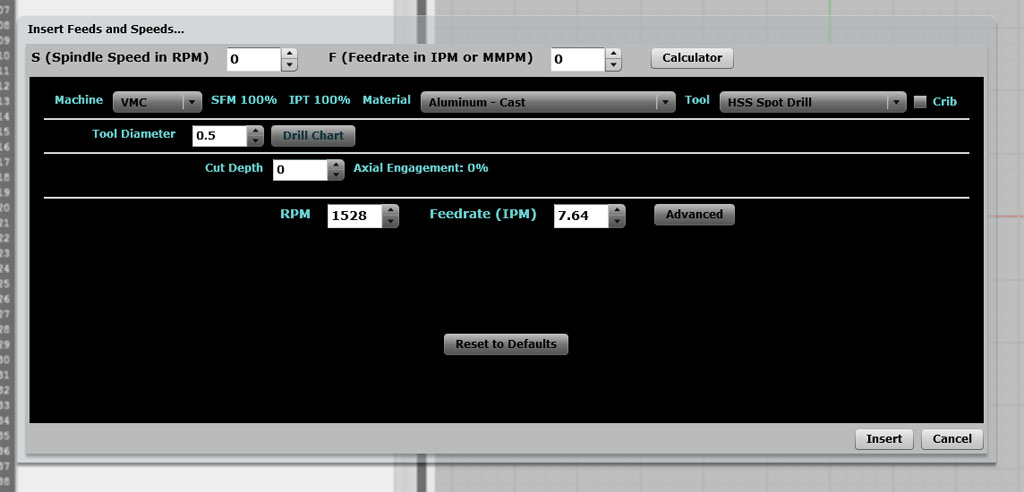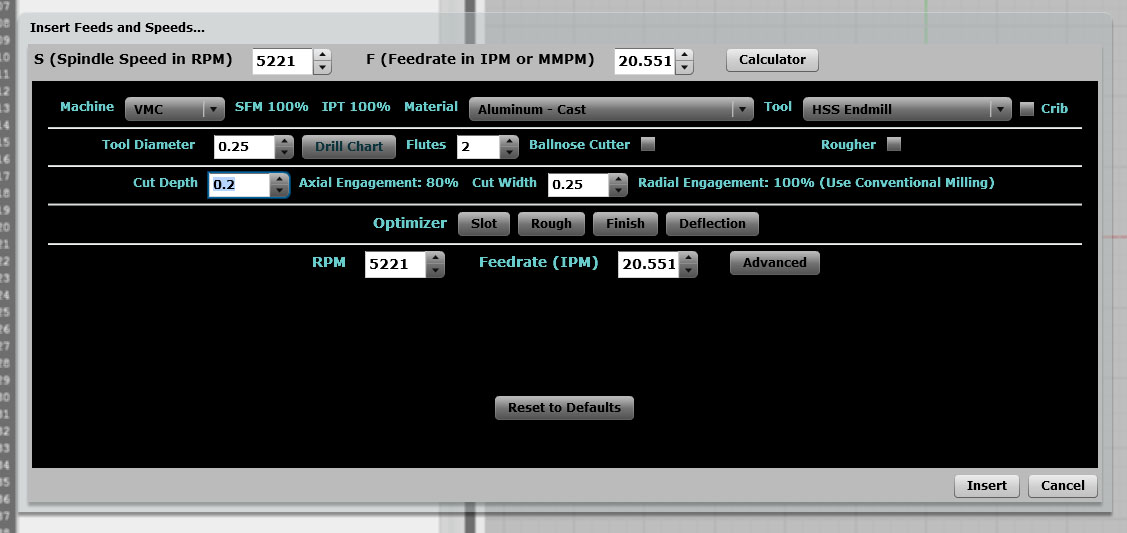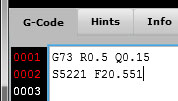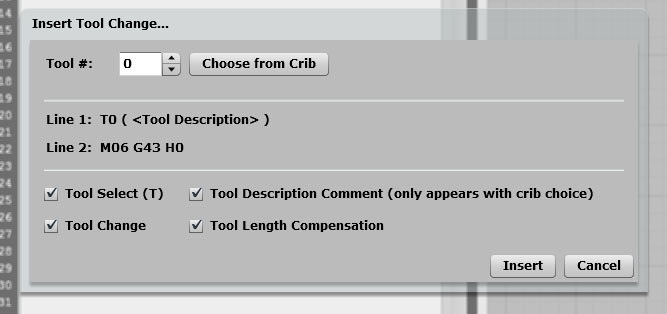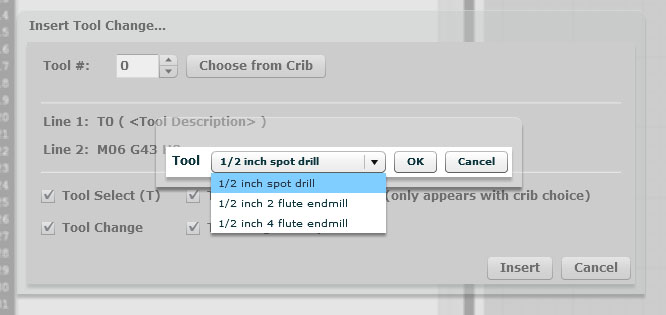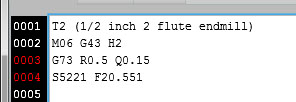GW Editor User Guide
|
||||||||
|
G-Wizard Editor: G-Code Wizards Okay, let's say you're ready to write a g-code program. You can just start typing it in, or you can use the G-Code Wizards to help. If you're not familiar with g-code, you may want to try our G-Code Tutorial. You invoke the G-Code Wizards in one of 3 ways: - Via the Insert Menu - Via the Insert Buttons on the Tool Bar - Via the keystroke shortcuts: Ctrl + G for G-Codes Ctrl + M for M-Codes Ctrl + S for Speeds n' Feeds (Ctrl + F is Find/Replace) Ctrl + T for Tool Change Ctrl + 3 for a macro #-Variable or other macro help. Note that Ctrl+3 can be remembered as Ctrl+# for "#-var". Just don't try to use the Shift key! The Wizards are set up so you can click along with a mouse, but if you close your eyes you can also really fly on the keyboard very naturally. Let's look at each type of Wizard to see how they work. G- and M-Code Wizards The majority of your Wizard use will likely be with the G- and M-Code Wizards. Just hit Ctrl+G or Ctrl+M and up the Wizard pops:
The G- and M-Code Wizard... There are several things going on in that screen shot. First, at the top, are a series of buttons to help you navigate through the long list of codes. You can switch between G- and M- codes in cases you started out with the wrong bunch or just want to double check that what you want isn't on the other list. You can then narrow down your search with the categories such as "Motion" or "Canned" G-Codes. Or you can scroll the the list and look at what's available. If you know the code, you can just type it and the list will scroll right to that code. Let's say I want a G73 drilling cycle. From the editor, I type Ctrl+G and then "73" and I'm there:
I'm still just looking at the G73 and neighboring codes. The "Notes" section gives me some more detail to think about, such as the idea that I might prefer G82 for deeper holes. Next, I either hit <Enter> on the keyboard or click the "Insert" button to move ahead:
This is the parameter breakdown for G73, and this is where it starts to get interesting. So far, the Wizard has helped me to find the G-Code I want, but that's not that hard. Now I am getting full help on filling out the parameters for that code. I know which parameters it accepts, which ones are required, which ones are optional, and what they do. So I start entering some parameters:
As I enter parameters, they turn green to show which ones will actually be used. Last thing is to hit <Enter> or click "Insert" and I'm done:
G73 with a R(etract) and Q (Peck) inserted and the editor is ready for the next G-Code. Speeds n' Feeds Wizard Of course given G-Wizard Calculator, you'd expect the Speeds n' Feeds Wizard to be pretty cool, right? Actually, it starts out boring:
The goal on these Wizards is to get out of your way quickly if you know what you want, but to step up as needed. In this case, we have the "Calculator" button. Press it and here is what you'll get:
If you're a licensed G-Wizard Calculator user, you get the full Calculator Feeds and Speeds capabilities... If you're a licensed G-Wizard Calculator user, you get the full Calculator Feeds and Speeds capabilities. This is one of many places where functionality from G-Wizard Calculator is made accessible in G-Wizard Editor. So, fill in your parameters for let's say a 1/4" endmill doing a full slot in some 6061 aluminum:
The parameters are in and fed through to the S and F words for a Feeds and Speeds code entry. Note that you can configure your machine profile with your machine's spindle HP, max rpm, max feedrate and so on, just like in the Calculator. In fact, if you configured the profile in the Calculator, the Editor will pick it up. At this point, we can hit <Enter> or click "Insert" and we'll see the code in the editor:
Pretty easy, eh?
Tool Change Wizard The Tool Change Wizard, like Feeds and Speeds Wizard, takes advantage of some of the functionality that was built for the Calculator. It starts like this:
Note that the Wizard is ready to enter 4 different operations relating to the tool change: - Tool Selection, with the "T" word. - A comment describing the tool. - The M06 that actually causes the Tool Changer to put the selected tool into the spindle. - The G43 + "H" parameter needed for Tool Length compensation. You can select your tool with the Numeric Stepper or by selecting from the Tool Crib. You can see what the G-Codes will look like in the preview (where it says, "Line 1:", etc.). And, you can turn each of the 4 components on or off with the check boxes if you don't want all of them. The part that is borrowed from the Calculator is the Tool Crib function. Clicking "Choose from Crib" gives the following:
The list is drawn from the Tool Crib definitions you create in the Calculator, or from the Tool Crib defined in the Editor under the "Machine" button. Tool Crib definition looks identical in the Calculator and the Editor, and if you have both installed, the Cribs are shared between the two. You can define multiple Cribs, so it only makes sense to create one for what's in your toolchanger, one for what's in the cart next to the machine, and so on. If we finish the selection, it looks like this:
Notice that the name from the Tool Crib is automatically inserted into the comment. Macro Wizards Macros are not going to be available in the early alpha versions of the Editor, so I won't spend time documenting them yet. Spend a little time playing with the Wizards. Try bringing them up entirely from the keyboard as well as using the mouse. Notice how they guide you and try to save you some keystrokes.
What to read next Let's head over to GWE's Tool Tab.
|
||||||||
|
|
|
|
|
|
|
||
|
|
|
|||||||



